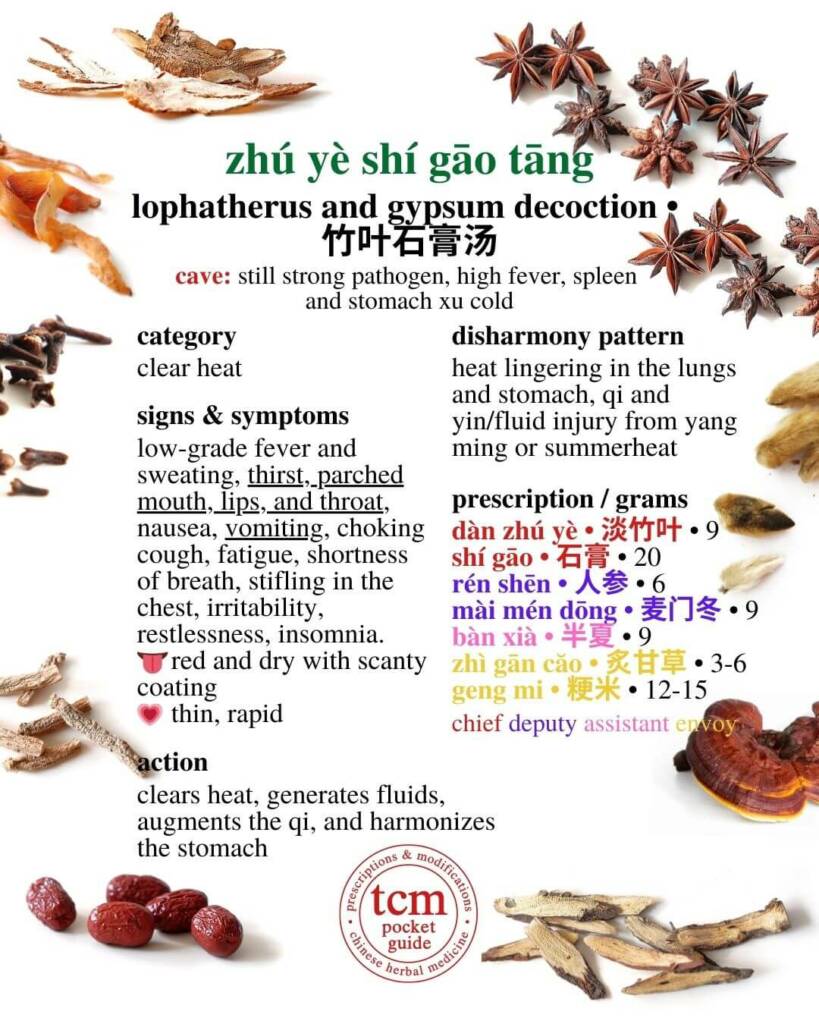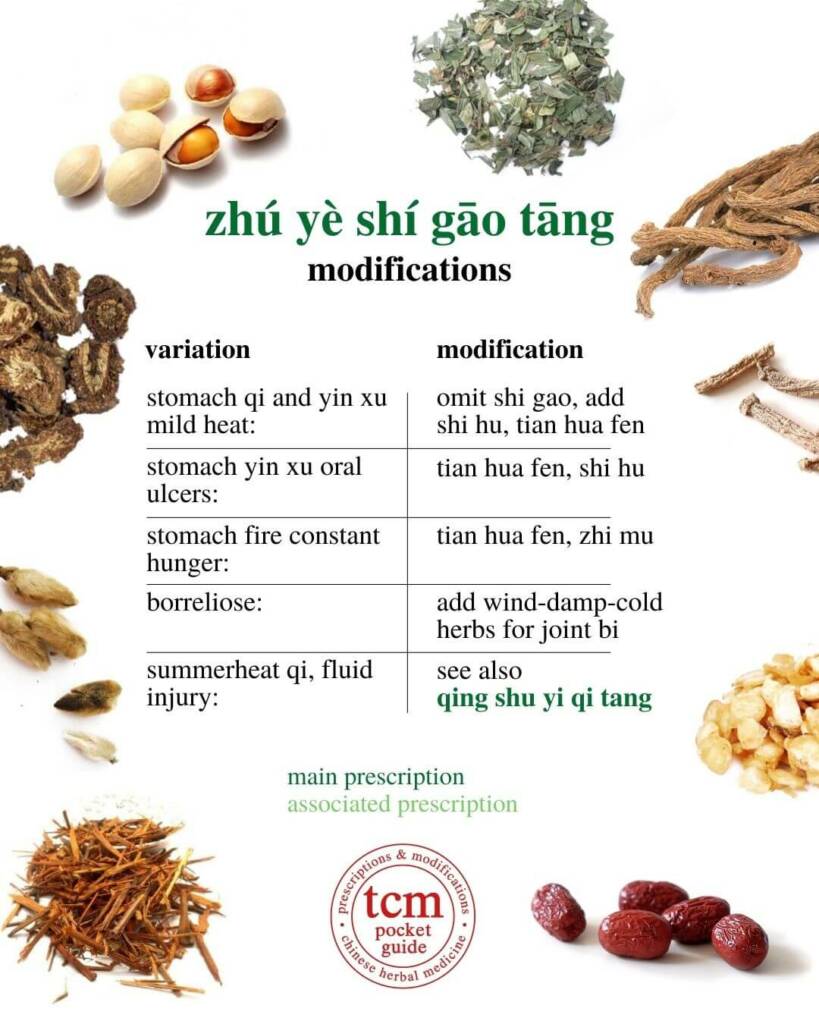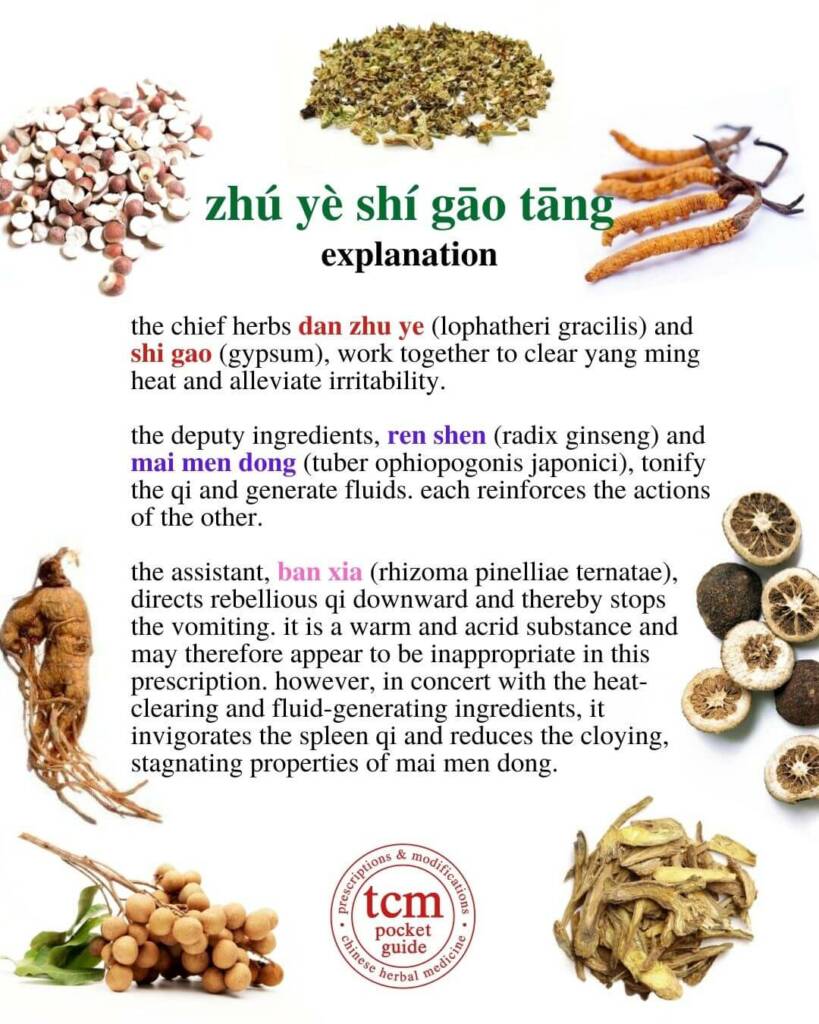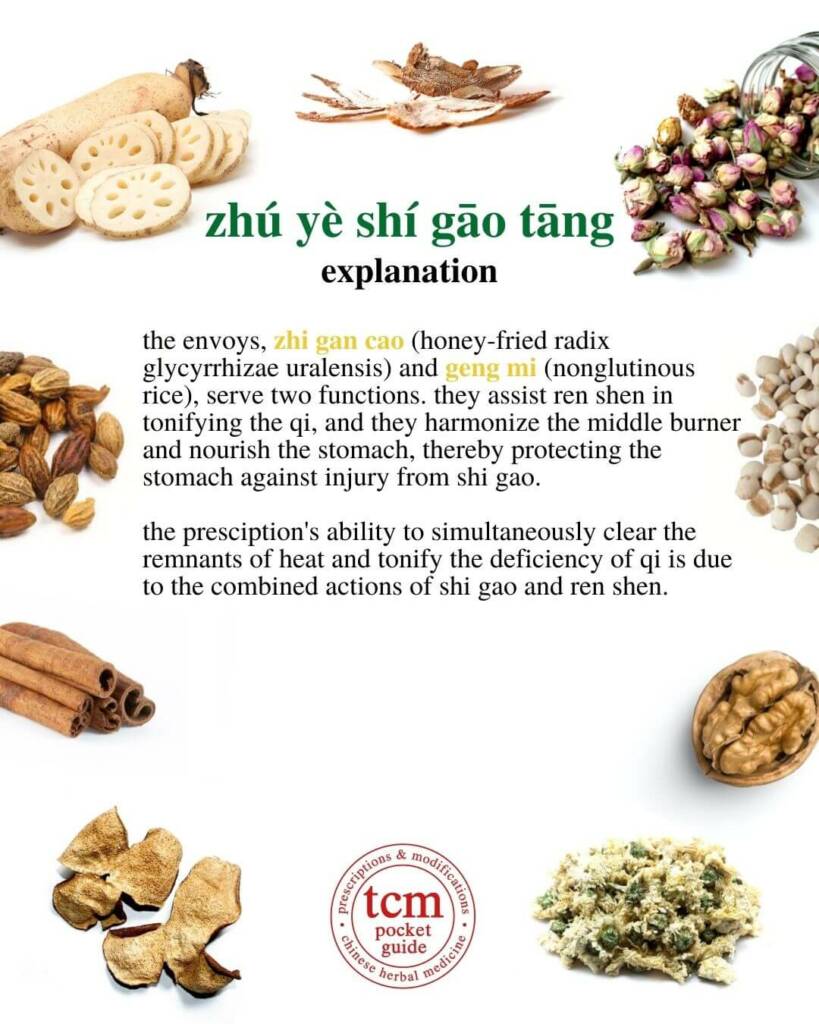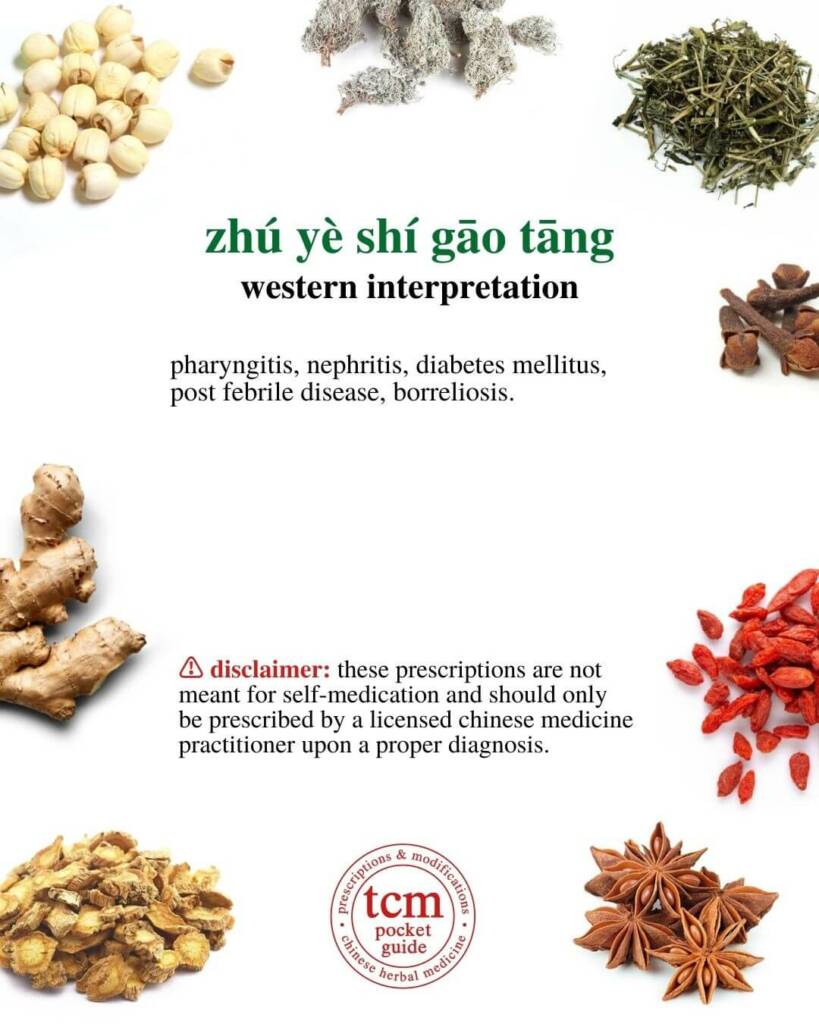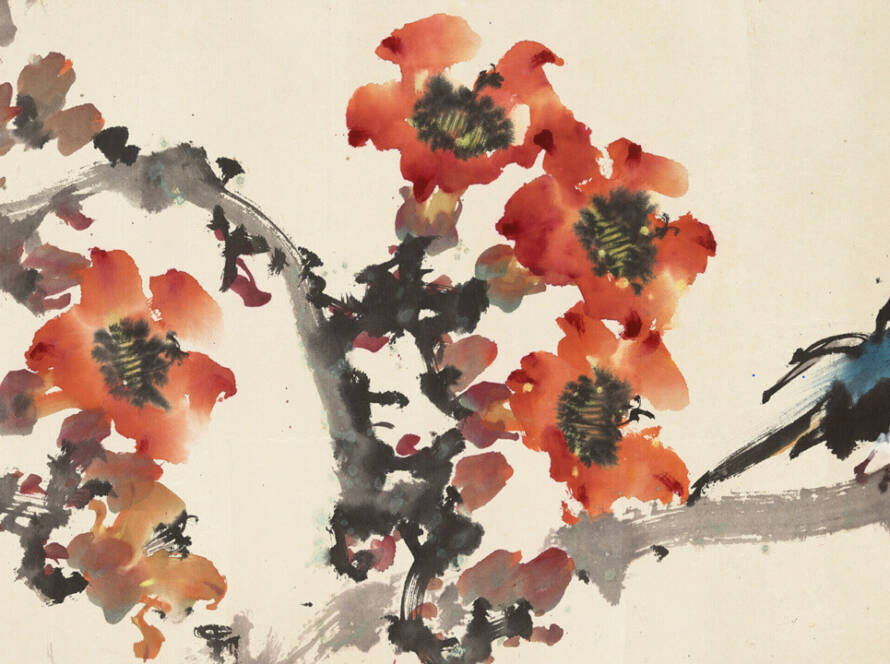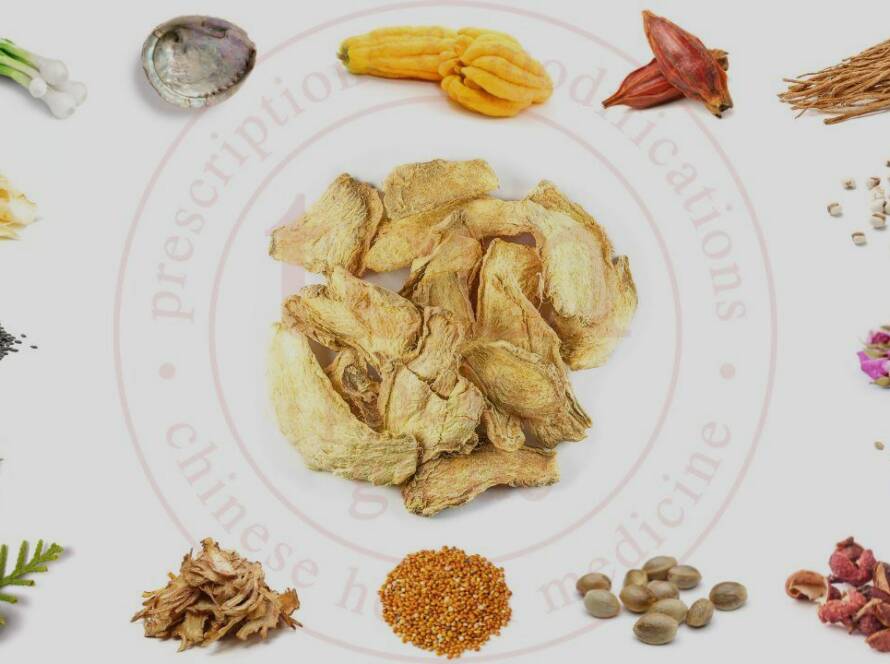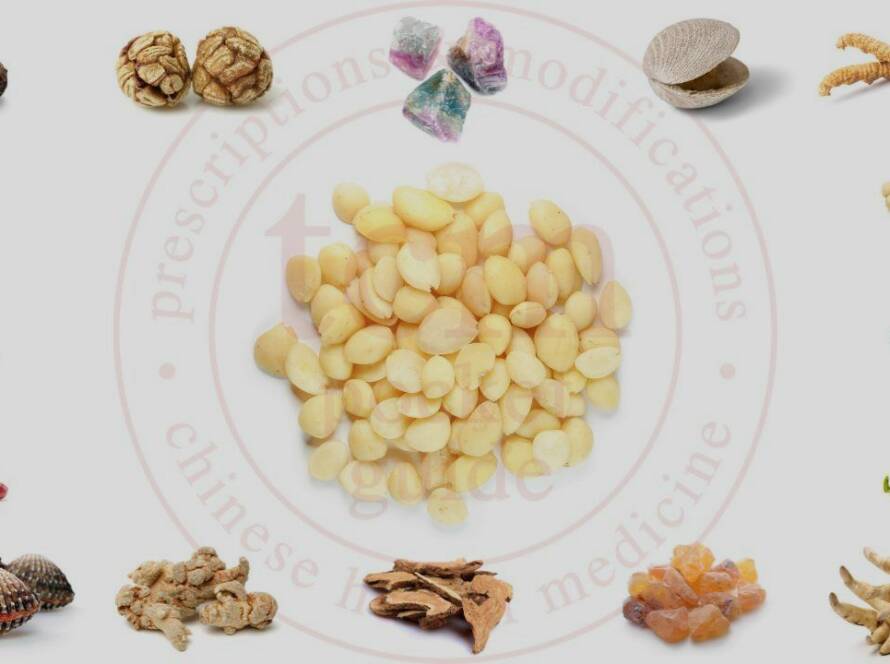zhú yè shí gāo tāng is used for patterns with
heat lingering in the lungs and stomach, qi and yin/fluid injury from yang ming or summerheat.
symptoms indicating the use of zhú yè shí gāo tāng
low-grade fever, profuse sweating, night sweats, irritability, thirst, parched mouth, lips and throat, ulcerations of the mouth, choking cough, restlessness, insomnia, nausea, vomiting, anorexia, indigestion, toothache, listlessness, chest oppression, stifling sensation in the chest or epigastrium.
western interpretation of zhú yè shí gāo tāng
pharyngitis, nephritis, diabetes mellitus, post febrile disease, borreliosis, herpes simplex, menopause.
explanation of the mechanism
this is qi-level heat lingering in the lungs and stomach where it injures the qi and fluids. it usually occurs during the recovery stage or in the aftermath of a febrile disease. the more pronounced symptoms of heat have subsided, but a low-grade fever with sweating remains.
the heat has disturbed the spirit, resulting in irritability and insomnia. thirst, a dry mouth and lips, and a red, dry tongue with little or no coating reflect injury to the yin and fluids. the stifling sensation in the chest is due to heat obstructing the flow of qi. nausea, vomiting, and a choking cough indicate disharmony of qi flow in the stomach and lungs. the rapid and deficient or thready and rapid pulse is also indicative of heat and depleted fluids.
(bensky & barolet)

created with love in switzerland 🇨🇭
feel free to share this content:


